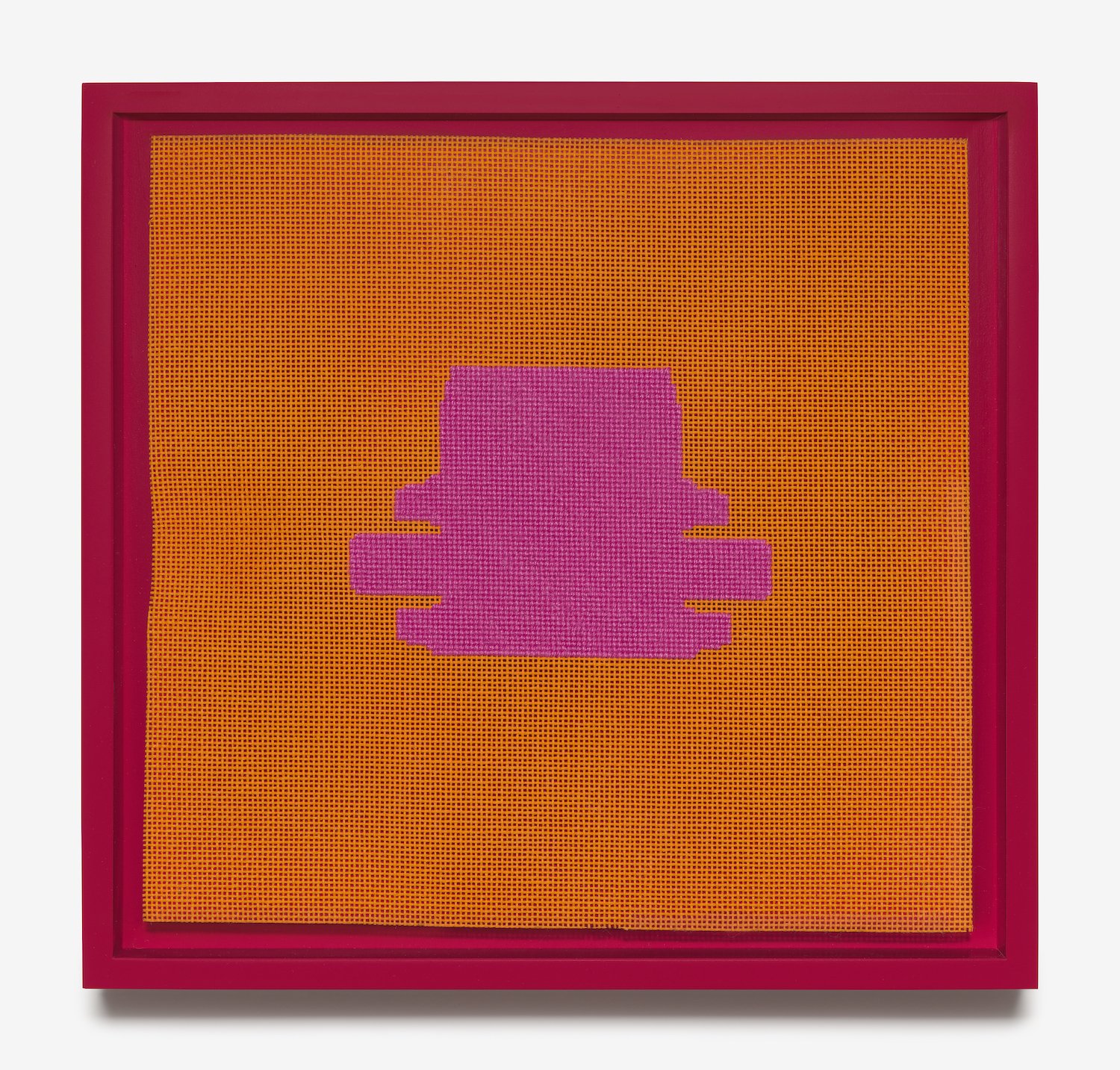UNFOLDED (scroll for images below)
My grandmother taught me to needlepoint when I was 14, during a long slow summer when I was baking and selling cheesecakes and cleaning houses for summer jobs. She had some extra blank canvas and wool and helped me create a simple design of water and birds, which when finished would become a coaster for my parents. I also made a small pillow for my bedroom, again of my own design.
Then came the lockdown during the pandemic. Everyone was homemaking: stuck inside, cleaning closets, cooking more, and trying to work and to keep the family busy and happy. Time took on a new quality. Having always used materials “at hand,” in my work—often with consumer packaging—being at home with limited resources wasn’t such an unusual situation for me. I found some blank needlepoint canvas in the closet and got some leftover wool from a sister’s previous projects, and so began the Unfolded Boxes project.
My shapes and colors are chosen for me from what is available commercially in the unfolded box forms—the geometric nets—and the colored canvases and wools, many of which incidentally have food names, such as pesto, butter, and pomegranate. As I am working on these I’m listening to audio books, whose stories become entwined with my own thoughts and ruminations which consequently embed themselves in the work. The titles reflect this, along with the origin of the box: Garlic: Born to Run; Food Coloring: Ethan Frome; Vanilla: On Earth We’re Briefly Gorgeous.
Each needlepointed box shape requires a month or more to complete, in contrast with the provisional nature of the source material—the grocery box—which serves only to store food until its consumption, ultimately ending up in the recycling bin, or worse, a landfill. In my own quiet way I’m commenting on the effects of capitalist production in our world. How do we “spend” our time?
In acknowledging the history of needlework as it is attributed to women of a certain social standing who were taught the skills by mothers and grandmothers for household benefit, I am also aware of the long tradition of women who didn’t have the luxury of stitching decorative objects but rather stitched out of necessity—think of the quilters of Gee’s Bend and so many others who took the scraps and leftovers from worn clothing and crafted the textiles that kept them warm. From orphanages to monarchies, the women were doing the work, putting in time and labor, often invisibly.
This work places rapidly used up objects into conversation with the slowness of stitching and the permanence of synthetic materials. Drawing from contemporary consumer culture, my nonfunctional stitchings give attention to our relationships with consumable images and objects, revealing the unfamiliar. This is supremely digital work; every micron of fiber has passed through my fingers. I’m making acknowledgement of and creating an antidote to the flattened experience of digital life. The box’s strangeness has always been there, hidden; here you can fold it in your mind.
—Rachel Perry, Brooklyn, NY February 18, 2022
Bobbi Brown: Burn Rate (2022), wool and silk on canvas, artist frame, 10 x 10.75 x 1.5 inches, unique
Cream Cheese: The Vanishing Half (2021), wool and silk on canvas, artist frame, canvas size: 12 x 13.375 x 1.5 inches, unique
Mustard Seed Dark Chocolate: Romantic Comedy (2023), wool and silk scraps on canvas, artist frame, 14 x 13.5 x 1.5 inches, unique
Vanilla (small): On Earth We’re Briefly Gorgeous (2021), wool and silk on canvas, artist frame, canvas size: 10 x 10 inches, unique
Garlic: Born to Run (2021), wool and silk on canvas, artist frame, canvas size: 12 1/2 x 16 1/2 inches, unique
Caviar: How To Do Nothing (2021), wool and silk on canvas, artist frame, canvas size: 15 x 12 inches, unique
…and many more images to come





